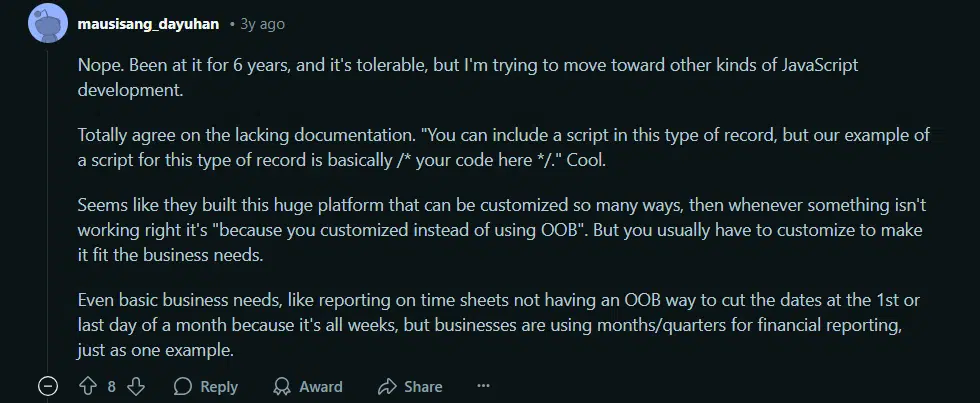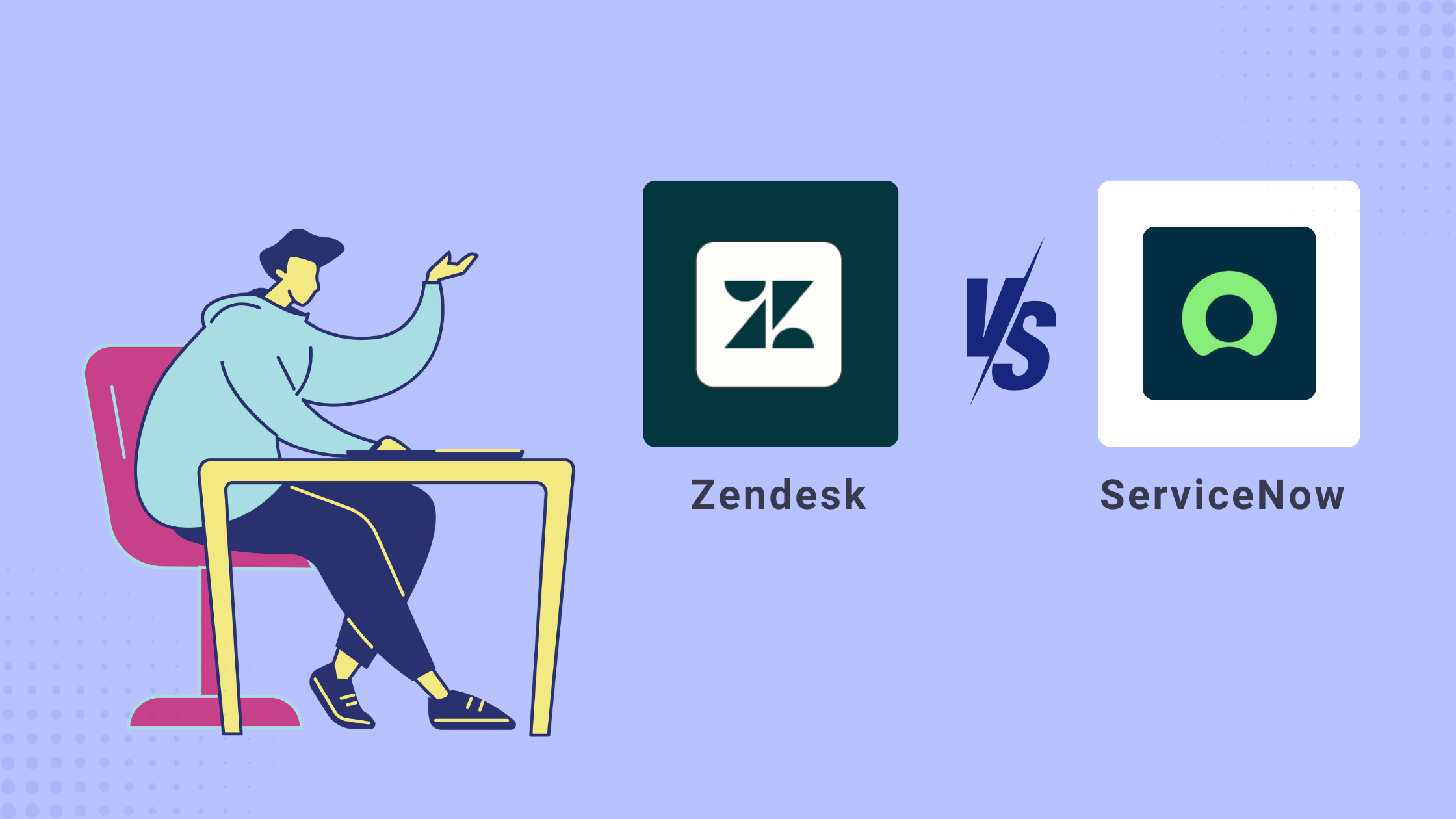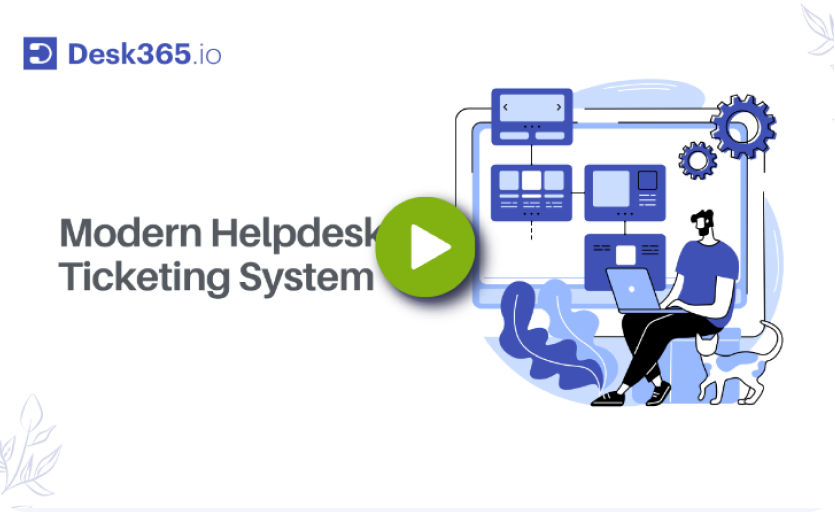ServiceNow has built a reputation as one of the most powerful platforms in the IT service management (ITSM) space, serving large enterprises with complex workflows and high-volume support needs.
Known for its extensive feature set and enterprise-grade capabilities, ServiceNow has become a go-to solution for organizations looking to unify IT operations, automate workflows, and drive digital transformation. But as the platform continues to grow, so do questions about its usability, cost, and customer support experience.
While many users praise ServiceNow for its robust customization options and ability to scale across departments, others point out a steep learning curve, high implementation costs, and a user experience that can feel overly complex for everyday users.
As with any major platform investment, it’s crucial to understand not just the marketing promises—but the real-world experience of current customers.
In this in-depth ServiceNow review, we’ll break down what users love, what challenges they face, and whether ServiceNow is truly the best choice for your organization—or if a simpler, more agile alternative might be a better fit.
ServiceNow reviews: Overview and comparison
- Pricing
- Ticketing management
- AI
- Customer support
- Customization
1. ServiceNow pricing
ServiceNow is a comprehensive platform offering IT service management (ITSM) and other enterprise solutions. Its pricing is highly customized, influenced by factors such as the number of users, selected modules, and required levels of support. ServiceNow does not publicly disclose standard pricing; instead, they provide tailored quotes based on each organization’s specific needs.
Key components of ServiceNow pricing:
Subscription fees: ServiceNow primarily operates on a subscription-based model, with costs determined by the number of users and the specific modules selected. For example, ITSM licenses may start at around $90 per user per month, with advanced modules like IT Operations Management (ITOM) costing between $150 and $200 per user per month.
Implementation costs: These are one-time fees associated with setting up and configuring ServiceNow within an organization. They include setup and installation, customization and integration, testing, and training. Implementation costs can range from $10,000 to $100,000, depending on the complexity and scope of the deployment.
Ongoing service costs: Beyond subscription fees, organizations may incur annual maintenance fees starting at around $200. These fees cover software upgrades and ongoing support services. Additional features, increased user counts, or expanded departmental usage can lead to increased costs over time.
Total cost of ownership (TCO): The TCO encompasses all expenses related to ServiceNow, including consultation, setup, customization, integration, training, and maintenance. Factors such as organization size, required customization, and chosen modules significantly influence the TCO.
Read more – ServiceNow pricing 2025: The complete breakdown
Their pricing model is a bit complex and it could be pricey. Further, since the product can become the core of so many areas of the enterprise, it can require quite a large investment in support resources and it requires these resources to understand SaaS management differences vs traditional application support development.
However, as a Reddit user perfectly put it: “Using ServiceNow for 10 people is like using a surface-to-air missile to kill a squirrel in your backyard.” This analogy highlights a crucial point—ServiceNow’s vast array of features and capabilities can be overkill for small businesses or teams with simpler needs. While it excels at managing complex workflows across large teams, many businesses don’t need the full range of features or the level of complexity that ServiceNow offers.

On average, Desk365 costs 87% less than ServiceNow!
ServiceNow can be pretty expensive, especially for smaller businesses or organizations with tighter budgets. While it offers a ton of features and is a powerful platform, the costs can add up quickly when you factor in subscriptions, implementation, and ongoing support.
If you’re looking for a more affordable option, Desk365 might be a game-changer. By switching to Desk365, you could save up to 87% on costs compared to ServiceNow. Desk365 starts at just $12 per user per month and provides many of the essential features you’d need, like AI-powered ticketing, automation, and seamless integrations with tools like Microsoft Teams—all without the heavy price tag or the complex setup process that comes with ServiceNow.
For many businesses, Desk365 offers a more budget-friendly alternative while still meeting their service management needs, making it easier to save money without sacrificing functionality.
Ticketing Management
One reviewer mentions using ServiceNow to manage IT tickets for tasks like system installation, production monitoring, and support workflows. They highlight how easy it is to set up projects, monitor service requests, define SLAs, and integrate with tools like Jira and Outlook. The reviewer also points out the AI-powered incident management as a valuable feature, helping teams respond faster to common customer issues.
Another user keeps it short and sweet, emphasizing how reliable and easy to use the ticketing system is, mentioning that it handles large volumes efficiently and even saves time in their daily work.
Serice now is the best suitable tool now a days for IT service managment. we used service now for managing IT tickets like service request for system installation, monitering production support of web applications. you can easily setup any project in service now and moniter service request easily. you can define SLA of each request type as per incident category. Service now is many cloud based integration now and you can connect it with JIRA items also. Service now also has AI based incident management process which can help us to support common customers query. it has nice outlook integration to support mailing process. service now UI is very simple and easy to use. you can easily make custom modification as per your project demand. Now a days most of big IT firms prefer Service Now more. YOU HAVE 24*7 support available from service now support team for any help and guideline
The ticketing system is the best thing about ServiceNow ITSM. It is easy to use and can handle the load very well. I use it everyday for my work. It is easy to use and even saves my time.
Key takeaways
Users consistently highlight that ServiceNow’s ticketing system is both easy to use and powerful enough to handle high volumes of IT service requests. Its user-friendly interface makes it accessible for daily operations, while its customizable workflows allow teams to define SLAs and tailor processes based on specific project needs. Reviewers also appreciate the platform’s AI-driven incident management, which helps automate responses and improves overall efficiency.
AI
ServiceNow has increasingly focused on AI and machine learning to enhance the way organizations manage IT services, operations, and employee experiences. Instead of just being a workflow tool, ServiceNow now offers intelligent features that help teams work faster, make better decisions, and reduce manual effort.
One of the key strengths of ServiceNow AI is in incident and request management. The platform can automatically categorize, prioritize, and route incoming tickets based on historical data and context. This helps reduce response times and ensures tickets are handled by the right teams without needing human triage.

Source: Gartner
One of the reviewers on Gartner says, one of the standout features of ServiceNow is its AI-powered intelligence that helps swiftly identify, resolve, and address incidents. This not only improves problem resolution but also increases efficiency across teams. Users appreciate how ServiceNow integrates easily with other applications via API, allowing seamless data sharing and collaboration. The platform’s user-first design and support for digital transformation help enterprises achieve better and measurable results, even in fast-changing business environments.
Customer support
Some users appreciate that ServiceNow provides multiple ways to resolve issues and that the platform is easy to use and implement. One reviewer mentions that customer support is a top priority for ServiceNow and is frequently utilized by users. They also note that ServiceNow is becoming more adaptable, with better integration across various environments, helping it fit into a wide range of IT ecosystems.
On the flip side, other users have shared concerns about ServiceNow’s customer support and documentation quality. As the platform evolves, reviewers say that previous documentation becomes outdated, making it harder to troubleshoot issues. This lack of up-to-date resources can slow down administrators and teams trying to maintain or scale the platform. Some also mention occasional performance and optimization issues, such as long load times or certain tools not functioning properly.

Source: Gartner
I like the different ways of resolving the issues in all the ways. A user can easily use servicenow and also implement. The customer support is atmost priority in servicenow and also frequently being used. Now a days it is also being integrated into multiple environments
Key takeaways
Customer support in ServiceNow receives mixed feedback. While some users highlight responsive support and ease of implementation, others struggle with outdated documentation and inconsistent optimization. The experience largely depends on the use case, team size, and how deeply the platform is integrated into the organization. For teams that need reliable, up-to-date help, this could be an area to watch closely.
Customization
While ServiceNow is praised for its powerful features, several users point out that the initial learning curve can be steep, especially for new users or those without a technical background. The platform is feature-rich, which can feel overwhelming at first, and customization—though a strong suit—can sometimes lead to added complexity. Tailoring ServiceNow to an organization’s unique needs often requires significant time and resources, which can be challenging for smaller teams.
While ServiceNow has many strengths, there are a few aspects that can be a bit frustrating. For one, the initial learning curve can be steep. Even though the platform is user-friendly, navigating all its features and capabilities can feel overwhelming at first, especially for new users or those without a tech background. Additionally, customization, while a strong point, can sometimes lead to complexity. Organizations may find themselves needing to invest significant time and resources to tailor the platform to their specific needs, which can be a bit of a hurdle. Another common concern is the cost. For smaller businesses, the pricing model can be a barrier, especially when trying to access some of the more advanced features.

Source: Capterra
Do people enjoy using ServiceNow?
One experienced user shared that on Reddit that, after six years of using ServiceNow, they find it tolerable but not particularly enjoyable. A key frustration is the lack of clear documentation—especially when it comes to scripting or customizing record types. They pointed out that while ServiceNow is highly customizable, that often becomes a double-edged sword. When things break, the response is often, “It’s because you customized it.” The user also mentioned some basic features missing out-of-the-box (OOB), like the ability to set monthly or quarterly reporting dates—something many businesses need.

Source: Reddit
On the other hand, another user had a very positive experience, especially from a technical standpoint. They highlighted how fast and stable the platform is, with updates reflecting instantly and the database handling changes extremely efficiently. They also praised the reliability and speed of scripts, describing it as “mind-blowingly fast.” However, they did admit that the UI could be better, especially for users juggling multiple tasks or working across many places in the system.

Source: Reddit
Key takeaways
ServiceNow earns strong praise for its performance, reliability, and flexibility, especially from technical users. However, the steep learning curve, sparse documentation, and reliance on heavy customization can make the experience frustrating—particularly for those working outside of core development. Whether someone enjoys using the platform largely depends on their role, how much customization their org uses, and how deep their technical knowledge goes.
Here’s what people are saying about Desk365 on Reddit,

Some users have shared mixed feelings about ServiceNow, particularly around its complexity and steep learning curve. While the platform is powerful and highly customizable, this flexibility often requires significant time, technical knowledge, and ongoing maintenance—especially for smaller teams. Users have also raised concerns about outdated documentation and inconsistent customer support, making it harder to resolve issues efficiently. For some, even basic functions require custom solutions, which can lead to frustration and delays.
On the other hand, alternatives like Desk365 are gaining attention for being more straightforward, easier to implement, and backed by responsive customer support.
While ServiceNow offers enterprise-grade capabilities, it may not always be the most user-friendly option—especially for organizations that need quick setup, lower overhead, and a more guided support experience.









